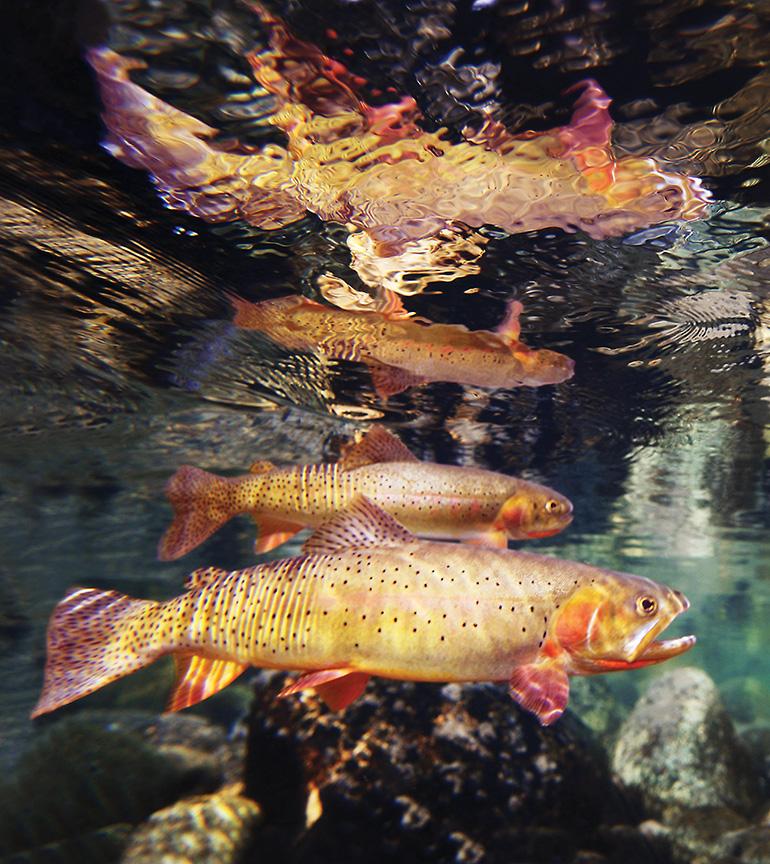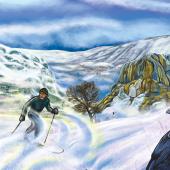Overkill
A criticism of fisheries management.
Yellowstone National Park is under assault. Or more correctly, several of its creeks, rivers, and lakes are. In accordance with the 2011 Native Fish Conservation Plan, several of the Park’s most popular waters will be poisoned with Rotenone in an effort to eliminate non-native fish species. While the plan intends to recreate an original version of the Park’s fisheries, it’s based on pre-conceived notions and driven by previously established management plans.
In addition to Rotenone campaigns, a very aggressive gill-netting program is underway in Yellowstone Lake, targeting lake trout that were originally planted by the Park Service 120 years ago for anglers to enjoy for generations to come. About 300,000 lake trout were killed in 2013 alone. According to Daniel Woodward, a 33-year United States Fish and Wildlife Service fisheries veteran, Rotenone was never recommended for whole drainage systems like Soda Butte Creek. Woodward worked in the Park on Soda Butte, and studied the effects of insecticides, herbicides, mine waste, and drilling fluids on fish and aquatic systems across the West. He explains that systems like Soda Butte Creek have multiple feeder streams and a complex ecology of fish and aquatic organisms, not to mention terrestrial species that feed on aquatics. Professor of zoology Harley Reno makes it plain in saying that the consequences of using poison to re-create natural conditions are far-reaching and potentially harmful. “Politically, it’s a nice thing to do, but biologically, it’s nonsense.” He criticizes managing a native species over others that are fully adapted to a watershed, calling this overarching policy “poorly conceived, at best.”
Rotenone kills almost all oxygen-breathing life forms within a system. In the case of Soda Butte Creek, it will kill all fish species, including most of the native Yellowstone cutthroat that live there now. It will also threaten critters that live near or intersect with this creek, including otters, mink, weasels, ouzels, bald eagles, osprey, heron, wolves, bears, and many more.
Gill-netting in Yellowstone Lake is another policy-driven agenda. The National Park Service’s fisheries-management policy is to cull non-native species regardless of the consequences. However, lake trout and Yellowstone cutthroats have co-existed in numerous regional lakes for over 100 years. One species, the Yellowstone cutthroat, lives near the surface, and the other, lake trout, in deeper water. The decline in Yellowstone cutthroat may perhaps be more accurately attributed to overall warming trends and resulting spawning cycles. Some snowpack years are better than others, but persistent drought, warming, fires, and whirling disease clearly have had a huge impact on Yellowstone cutts, raising the question: has everything been done in the management process to enhance habitat for cutthroat spawning?
The no-holds-barred media campaign to justify killing all lake trout in Yellowstone Lake, and poisoning numerous streams and lakes for the benefit of the Yellowstone cutthroat, westslope cutthroat, and fluvial grayling has the appearance of a coin with one side. There are still many questions left to ask, and a decision with this much riding on it should be thoroughly researched and agreed upon by the broadest constituency.
The grand diversity of the animals that reside in Yellowstone National Park are to be enjoyed by all who visit this remarkable setting and the killing of one for the other is worthy of very careful study and consideration prior to any irreversible action. For more info about stream poisoning, visit stopriverkilling.org.
David Decker owns the Complete Fly Fisher lodge on the banks of the Big Hole River.












